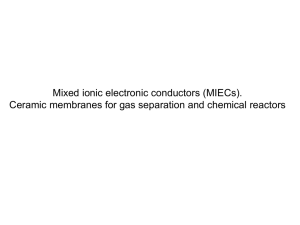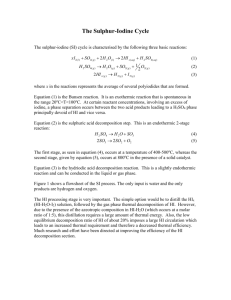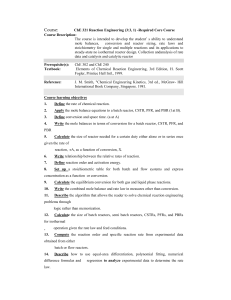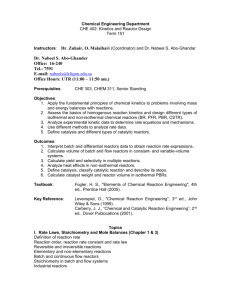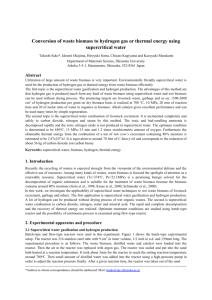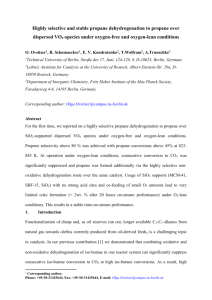Experimental and theoretical comparison of flow modes in a catalytic
advertisement
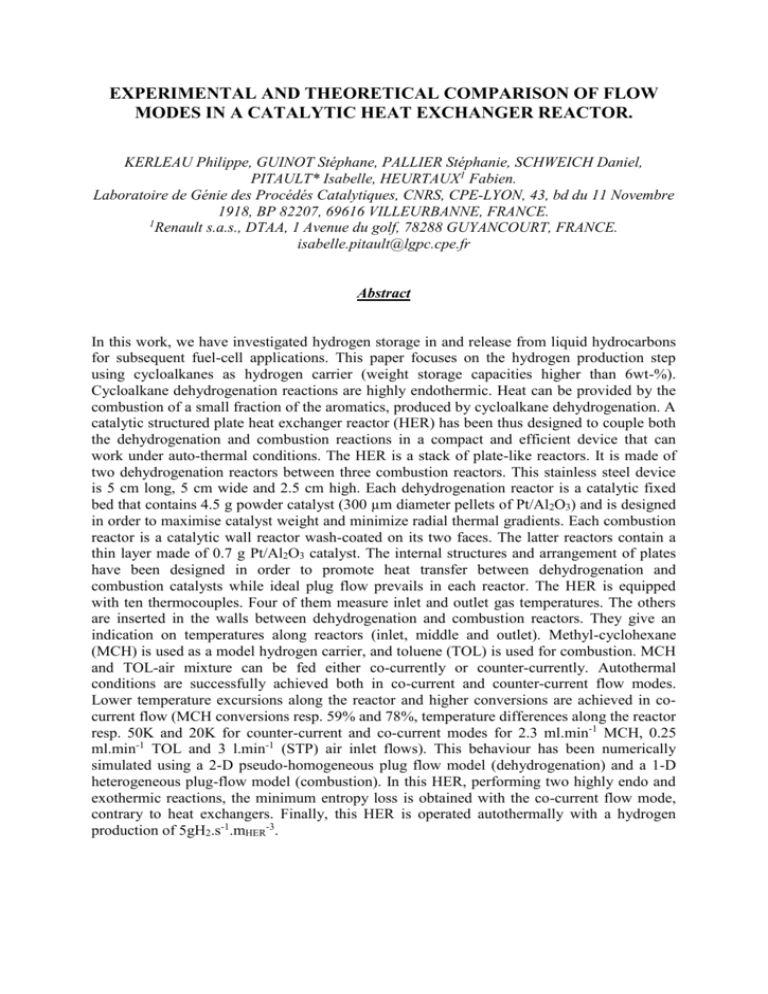
EXPERIMENTAL AND THEORETICAL COMPARISON OF FLOW MODES IN A CATALYTIC HEAT EXCHANGER REACTOR. KERLEAU Philippe, GUINOT Stéphane, PALLIER Stéphanie, SCHWEICH Daniel, PITAULT* Isabelle, HEURTAUX1 Fabien. Laboratoire de Génie des Procédés Catalytiques, CNRS, CPE-LYON, 43, bd du 11 Novembre 1918, BP 82207, 69616 VILLEURBANNE, FRANCE. 1 Renault s.a.s., DTAA, 1 Avenue du golf, 78288 GUYANCOURT, FRANCE. isabelle.pitault@lgpc.cpe.fr Abstract In this work, we have investigated hydrogen storage in and release from liquid hydrocarbons for subsequent fuel-cell applications. This paper focuses on the hydrogen production step using cycloalkanes as hydrogen carrier (weight storage capacities higher than 6wt-%). Cycloalkane dehydrogenation reactions are highly endothermic. Heat can be provided by the combustion of a small fraction of the aromatics, produced by cycloalkane dehydrogenation. A catalytic structured plate heat exchanger reactor (HER) has been thus designed to couple both the dehydrogenation and combustion reactions in a compact and efficient device that can work under auto-thermal conditions. The HER is a stack of plate-like reactors. It is made of two dehydrogenation reactors between three combustion reactors. This stainless steel device is 5 cm long, 5 cm wide and 2.5 cm high. Each dehydrogenation reactor is a catalytic fixed bed that contains 4.5 g powder catalyst (300 µm diameter pellets of Pt/Al2O3) and is designed in order to maximise catalyst weight and minimize radial thermal gradients. Each combustion reactor is a catalytic wall reactor wash-coated on its two faces. The latter reactors contain a thin layer made of 0.7 g Pt/Al2O3 catalyst. The internal structures and arrangement of plates have been designed in order to promote heat transfer between dehydrogenation and combustion catalysts while ideal plug flow prevails in each reactor. The HER is equipped with ten thermocouples. Four of them measure inlet and outlet gas temperatures. The others are inserted in the walls between dehydrogenation and combustion reactors. They give an indication on temperatures along reactors (inlet, middle and outlet). Methyl-cyclohexane (MCH) is used as a model hydrogen carrier, and toluene (TOL) is used for combustion. MCH and TOL-air mixture can be fed either co-currently or counter-currently. Autothermal conditions are successfully achieved both in co-current and counter-current flow modes. Lower temperature excursions along the reactor and higher conversions are achieved in cocurrent flow (MCH conversions resp. 59% and 78%, temperature differences along the reactor resp. 50K and 20K for counter-current and co-current modes for 2.3 ml.min-1 MCH, 0.25 ml.min-1 TOL and 3 l.min-1 (STP) air inlet flows). This behaviour has been numerically simulated using a 2-D pseudo-homogeneous plug flow model (dehydrogenation) and a 1-D heterogeneous plug-flow model (combustion). In this HER, performing two highly endo and exothermic reactions, the minimum entropy loss is obtained with the co-current flow mode, contrary to heat exchangers. Finally, this HER is operated autothermally with a hydrogen production of 5gH2.s-1.mHER-3.


